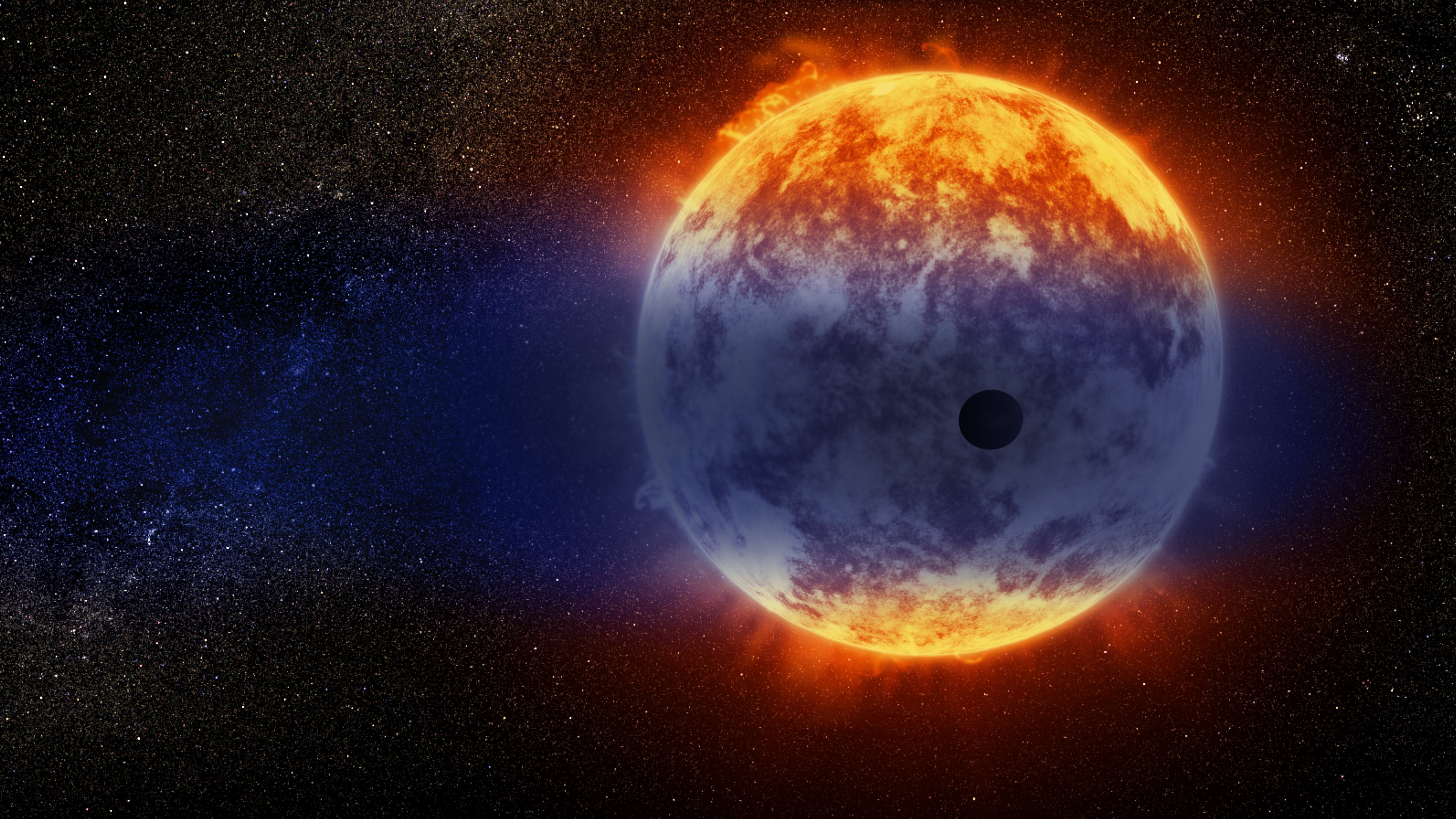'Smoking Gun' Planet: This Neptune-Size Alien World Is Evaporating in Record Time

A gaseous alien world is evaporating at a record rate, shedding considerable light on an exoplanet mystery, a new study reports.
The Neptune-size planet, known as GJ 3470b, orbits close to a young, active red dwarf star that lies 97 light-years from Earth. The radiation streaming from this star is stripping away GJ 3470b's upper atmosphere so dramatically that the planet likely won't remain a Neptune-size body for much longer, study team members said.
"This is the smoking gun that planets can lose a significant fraction of their entire mass," co-author David Sing, a professor of physics and Earth and planetary sciences at Johns Hopkins University in Baltimore, said in a statement. [Gallery: The Strangest Alien Planets]
"GJ 3470b is losing more of its mass than any other planet we've seen so far; in only a few billion years from now, half of the planet may be gone," Sing added.
The researchers, led by Vincent Bourrier of the University of Geneva in Switzerland, used NASA's Hubble Space Telescope to study GJ 3470b, which lies 3.7 million miles (6 million kilometers) from its parent star. That's just one-tenth the average distance between Mercury — our solar system's innermost planet — and the sun.
The Hubble data show that the red dwarf's proximity and activity are taking a serious toll on GJ 3470b. The telescope's Imaging Spectrograph instrument detected a vast cloud of hydrogen gas surrounding the planet — hydrogen that was once part of GJ 3470b's atmosphere. Indeed, the planet, which is just 2 billion years old, may already have lost about 35 percent of its mass in this way, the researchers said.
Which brings us to the exoplanet mystery. Over the past decade or so, astronomers have found lots of "hot Jupiters," "hot Earths" and "hot super-Earths" in extrasolar systems — tightly orbiting gas giants, Earth-size worlds and planets just a big bigger than our own, respectively. But there's a surprising dearth of "hot Neptunes."
Breaking space news, the latest updates on rocket launches, skywatching events and more!
"The question has been, where have the hot Neptunes gone?" Bourrier said in a different statement.
The new study, along with previous Hubble-based research documenting the (less extreme) evaporation of another roughly Neptune-size world known as GJ 436b, provides a possible answer: Hot Neptunes just don't last very long. They likely lose so much of their mass that they erode into super-Earths, or perhaps even Earth-size worlds. (Note: Both GJ 3470b and GJ 436b don't orbit tightly enough to be considered "hot Neptunes" themselves; technically, they're "warm Neptunes.")
The new study was published Thursday (Dec. 13) in the journal Astronomy & Astrophysics.
Mike Wall's book about the search for alien life, "Out There" (Grand Central Publishing, 2018; illustrated by Karl Tate) is out now. Follow him on Twitter @michaeldwall. Follow us @Spacedotcom or Facebook. Originally published on Space.com.

Michael Wall is a Senior Space Writer with Space.com and joined the team in 2010. He primarily covers exoplanets, spaceflight and military space, but has been known to dabble in the space art beat. His book about the search for alien life, "Out There," was published on Nov. 13, 2018. Before becoming a science writer, Michael worked as a herpetologist and wildlife biologist. He has a Ph.D. in evolutionary biology from the University of Sydney, Australia, a bachelor's degree from the University of Arizona, and a graduate certificate in science writing from the University of California, Santa Cruz. To find out what his latest project is, you can follow Michael on Twitter.

